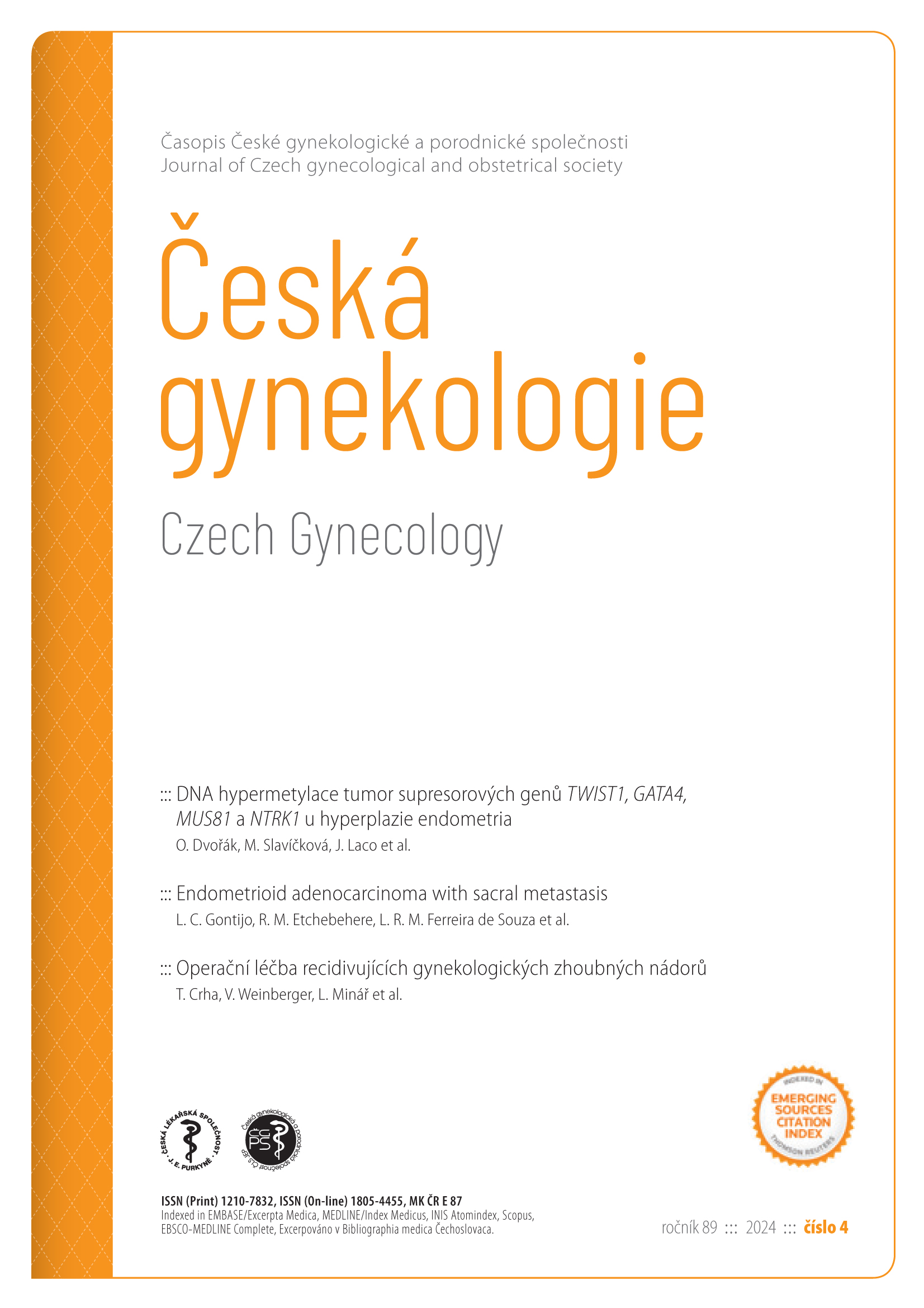Quality of life and psychosexual functioning of infertile women and men based on their specifi c dia gnosis
Keywords:
neplodnost – diagnóza – ženy a muži – kvalita života – sexuální fungováníAbstract
Aim: The aim of the study was to evaluate the infl uence of a specific diagnosis of infertile women and men on their life quality and psychosexual functioning based on internationally validated questionnaires. Materials and methods: A total of 853 couples seeking treatment for infertility completed the gender-specific batteries comprised of Fertility Quality of Life tool (FertiQoL), Female Sexual Function Index (FSFI) in women, and Brief Sexual Function Inventory (BSFI) in men. Women were followed in the group of primary and secondary infertility and then with specific diagnoses – polycystic ovary syndrome, tubal factor, endometriosis, and idiopathic sterility. Men’s categories reflected spermiogram results, i.e., normozoospermia, merged categories of milder disorders of a spermiogram (teratozoospermia, asthenozoospermia, oligozoospermia, and oligoasthenoteratospermia), oligoasthenoteratospermia (OAT) gravis, azoospermia, and when the man was not examined. Results: When evaluating the quality of life in women, we found statistically significant differences between primary and secondary sterility. Primary infertile women scored worse especially in the social area. Worse assessment appeared also in mind-body (area evaluating affliction of the body). Emotional and relational domains included similar results in primary and secondary infertile women. With a specific diagnosis, statistically significant differences were not proved. Using the orientational cut-off score, FertiQoL stated that approximately 10% of women experienced adverse quality of life in relation to fertility. In the domain of sexual functioning, 30% of women demonstrated clinically significant dysfunctions. In men, respondents in the normozoospermic and non-diagnosed categories scored higher than those in the merged category and OAT gravis. Only 2% of men felt their quality of life was poor due to fertility, and clinically significant dysfunctions appeared only in 3% of them. Conclusion: In women, impaired fertility-related quality of life and psychosexual functioning are significantly linked to primary sterility, where specifically the social domain is affected. The impact of a specific diagnosis appears to be minimal. We found high levels of sexual dysfunctions in women. In men, we follow the link of evaluated quality of life in connection with their results of the spermiogram. With spermiogram defects, both areas of functioning can be affected.


